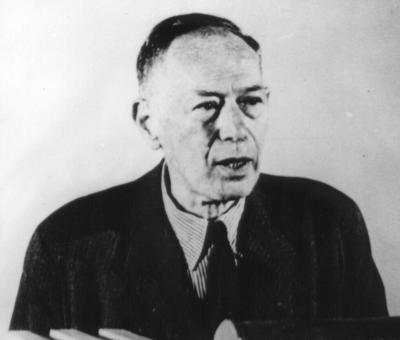Emil Utitz was born in 1883 in Prague. After studying in Prague, Munich and Leipzig he taught at the universities of Rostock and Halle as a professor of psychology and aesthetics. It is likely to have been during this period that he turned away from Judaism, but after the First World War he returned to to Judaism again. In 1933 he was forced to leave Germany, and returned to his birthplace, becoming a professor at the German University in Prague. He was deported to Terezín in 1942, surviving until the camp's liberation in 1945. He was in charge of the Terezín ghetto's central library (link in Czech).

A photo of Emil Utitz from the Nazi propaganda film shot in Terezín. (Photo: National Film Archive)
At the centre of his interest was aesthetics - he was a proponent of the idea of the autonomy of art, according to which art and aesthetics are related to each other but are not identical. He was also interested in characterology - the scientific study of human personality in its various manifestations - and the philosophy of man and culture. Utitz believed culture was an attempt by humans to overcome their own limitations. Among his most important works are Grundlegung der allgemeinen Kunstwissenchaft (1914-1920), Der Künstler (1925), Geschichte der Aesthetik (1932), Psychologie der Simulation (1925), Charakterologie (1925), Mensch und Kultur (1933) and Egon Erwin Kisch, der klassische Journalist (1956).
Utitz's perceptions of Terezín are captured in the study Psychologie života v terezínském koncentračním táboře (The Psychology of Life in the Terezín Concentration Camp) (Praha, 1947). As the title suggests, Utitz describes the effect that life in a concentration camp has on the individual psyche, and investigates the influence of a change in environment on human character and behaviour.
Emil Utitz died in Halle in 1956.
-
See also:
-
The library in the Terezín ghetto (article; in Czech)
-
Emil Utitz: The central library in the Terezín concentration camp (document; in Czech)